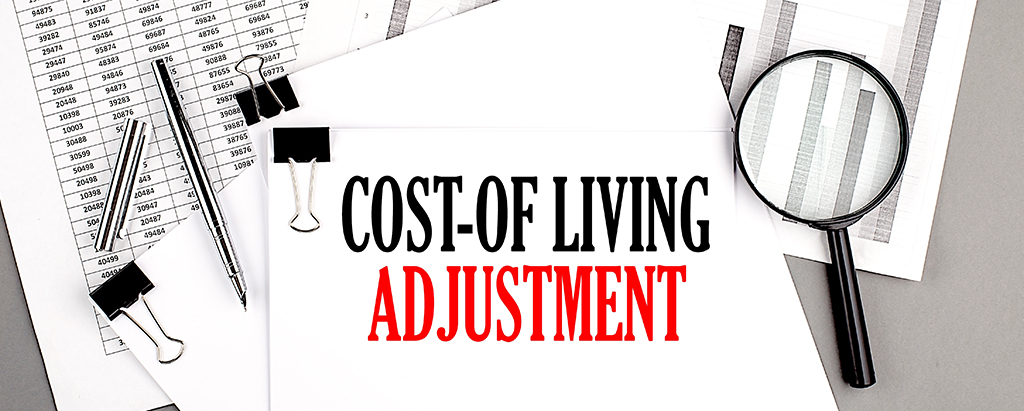
On October 10, the new Social Security COLA increase was announced, and many retirees were disappointed.
Each year, there is a cost-of-living adjustment (COLA), which is determined by a measurement of the Department of Labor’s Consumer Price Index for Urban Wage Earners and Clerical Workers.
The 2025 Social Security COLA increase is merely 2.5%.¹
This minimal increase means “retired workers’ Social Security checks will grow by around $48 a month, going from an average of $1,920 to $1,968.”²
Given the inflation Americans have dealt with over the last few years, retirees were hoping for more than a 2.5% increase, which is technically the lowest COLA increase since 2021.
Read on to learn more about why Social Security is not designed to cover retirement and how to potentially boost your retirement savings.
The Reality: Why the COLA Increase Isn’t Enough

Many retirees were hopeful for a more considerable COLA increase, considering inflation.
Unfortunately, while COLA aims to offset inflation, it lags due to delays in calculation.
For example, the annual COLA increase is determined by the Consumer Price Index, but many argue that this isn’t a fair index.
According to Drew Powers, the founder of Illinois-based Powers Financial Group, “The problem has always been that the CPI-U [Consumer Price Index for All Urban Consumers] and CPI-W have never been the ideal measure of senior citizen spending. When the COLA figure doesn’t match reality, our senior citizens suffer.”³
Moreover, the CPI numbers don’t adequately represent today’s expenses for elderly Americans.
Michael Ryan, a finance expert, suggests, “The inadequacy of the current COLA system isn’t just about numbers. As someone who’s worked with retirees for decades, I believe we need serious reform,” Ryan said. “The CPI-E (Elder Price Index) would better reflect seniors’ actual expenses, though it would require careful implementation to maintain program sustainability.”⁴
Approximately $50 extra is not going to provide much help to those who are struggling to cover basic necessities – let alone cover the high costs of medical care.
Moreover, the 2.5% increase is significantly less than the more generous 8.7% COLA from 2023 and the modest 3.2% in 2024.
The Risk: Social Security Alone Isn’t Enough for Retirement

Ultimately, Social Security was not designed to cover retirement.
Social Security was designed to supplement, not replace, retirement income.
According to the Social Security Administration: Understand the Benefits, “But Social Security was never meant to be the only source of income for people when they retire. Social Security replaces a percentage of a worker’s pre-retirement income based on your lifetime earnings. The amount of your average earnings that Social Security retirement benefits replaces depends on your earnings and when you choose to start benefits. […] Most financial advisers say you will need about 70 to 80% of pre-retirement income to live comfortably in retirement, including your Social Security benefits, investments, and personal savings.”⁵
Even so, 40% of older Americans rely solely on Social Security for retirement income.⁶
However, even those with 401(k) savings are worried about the minimal increase in Social Security COLA.
The Senior Citizens League (TSCL) found that “70 percent [of Americans] said they worry that persistently high inflation prices will cause them to raise their spending and risk depleting their retirement savings and other assets.”⁷
Additionally, TSCL reports, “Our research shows that 67 percent of seniors depend on Social Security for more than half their income and that 62 percent worry their retirement income won’t even cover essentials like groceries and medical bills.”⁸
Rather than become reliant on unpredictable future Social Security cost-of-living adjustments, take action to boost your retirement savings today.
Actionable Tips: How to Potentially Boost Retirement Savings Now

- Max out retirement contributions. Do all you can to contribute all you are allowed to contribute. If you are 50 or older, you can take advantage of catch-up contributions, which allow you to contribute more than the 2024 limit of $23,000. For those ages 50 and older, the 401(k) catch-up contribution is $7,500, for a total of $30,500.
- Get the employer match. Many employers match a percentage of employee contributions to their 401(k) up to a certain portion of the total salary. However, some match employee contributions up to a certain dollar amount. Make sure you are contributing enough to get this free money.
[See More: 4 Ways to Potentially Maximize Your 401(k) Company Match]
-
- Rebalance your account. Unmanaged allocations may experience larger losses because of down markets. In contrast, they may miss out on growth opportunities during good markets. For this reason, experts recommend rebalancing your 401(k) account regularly. This is one of the easiest ways to boost 401(k) savings.
[Related Read: What Every Investor Needs to Know about Rebalancing a 401(k)] - Don’t borrow or take early withdrawals. Even if you are tempted, avoid pulling funds from your 401(k). Whether you withdraw or take a 401(k) loan, your future will be penalized. Both have consequences for your financial future – mainly preventing your retirement savings from growing tax-deferred.
- Rebalance your account. Unmanaged allocations may experience larger losses because of down markets. In contrast, they may miss out on growth opportunities during good markets. For this reason, experts recommend rebalancing your 401(k) account regularly. This is one of the easiest ways to boost 401(k) savings.
- Cut Unnecessary Expenses. Cut unnecessary expenses today, take all the money you’ve saved, and put it toward your retirement savings. Choose the less expensive option when given a choice. Make wise financial choices today to protect your retirement future.
- Create Additional Income Streams. Look for opportunities for additional income streams, such as freelance work, part-time jobs, or real estate investments. Every little bit helps.
[Related Read: Close the Gap on Financial Goals with a Side Hustle]
- Consider Delaying Social Security Benefits. It may be financially wiser for you to put retirement on hold. The age at which you stop working affects how much you earn from Social Security. Additionally, the longer you work, the longer your 401(k) has to grow.
Get Help. If you are worried you may be depending on Social Security a little too much, seek help from an expert. They can help you determine what you need to do to improve your annual 401(k) account performance so that you don’t have to rely on Social Security.
Have questions about your 401(k)? Book a complimentary 15-minute 401(k) Strategy Session with one of our advisors.
SOURCES
- https://faq.ssa.gov/en-us/Topic/article/KA-01951
- https://www.newsweek.com/social-security-cola-2025-increase-sparks-backlash-1967146
- https://www.newsweek.com/social-security-cola-2025-increase-sparks-backlash-1967146
- https://www.newsweek.com/social-security-cola-2025-increase-sparks-backlash-1967146
- https://www.ssa.gov/pubs/EN-05-10024.pdf
- https://www.nirsonline.org/2020/01/new-report-40-of-older-americans-rely-solely-on-social-security-for-retirement-income/
- https://seniorsleague.org/2025-cola/
- https://seniorsleague.org/2025-cola/
.fb-background-color {
background: !important;
}
.fb_iframe_widget_fluid_desktop iframe {
width: 1100px !important;
}















